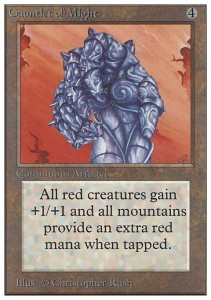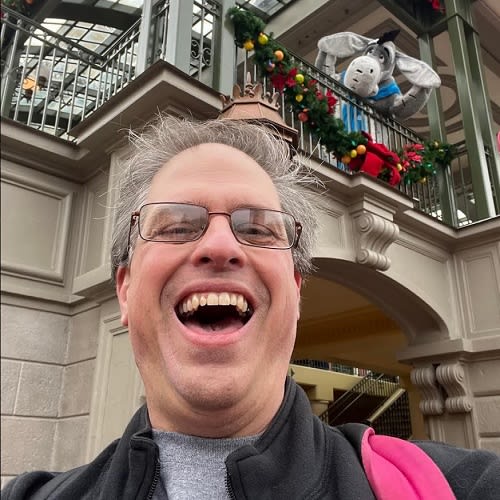If you have been reading me the past few weeks you know that I've been doing a series on Sealed decks. Today I'm going to stay in Sealed as a general theme but it isn't much of a play lesson. Today will still involved Sealed but it won't be twisting your brain any. It still might form a few wrinkles though.
 Today I want to talk to you about preparation and testing. In Constructed we all know how to playtest for an upcoming tournament. Take your deck of choice and play it against the numerous decklists that can be found all over the Internet (the gauntlet.) What players did before Magic had awesome websites like ManaNation.com I do not know but today it's easy to get list to test. If your deck of choice fares well against the "metagame" then you're prepared. If not then you either scrape the deck or use your sideboard to assist you. The only real hurdle is facing a "rogue" deck and preparing for what your opponents might board in against you.
Today I want to talk to you about preparation and testing. In Constructed we all know how to playtest for an upcoming tournament. Take your deck of choice and play it against the numerous decklists that can be found all over the Internet (the gauntlet.) What players did before Magic had awesome websites like ManaNation.com I do not know but today it's easy to get list to test. If your deck of choice fares well against the "metagame" then you're prepared. If not then you either scrape the deck or use your sideboard to assist you. The only real hurdle is facing a "rogue" deck and preparing for what your opponents might board in against you.
But how do you test for Sealed? You can't know what you'll face or what deck you'll get. That's the true dilemma. Today I'm going to give you a few ideas that you can hopefully use at home. Each has their own merits and disadvantages so you'll need to find the one that works for you the most. If you have another I would love to hear it in the comments.
The Players Gambit
This is most definitely the best choice for pure Magic play. The time and financial commitment are large but it yields the best chance of winning a Blue Envelope.
I call this the Players Gambit because it is what players want to do. Just take a list of all the PTQ's. Notice I said ALL of the PTQ's. Not just near you but anywhere. Then every weekend load up the Chevy and drive. All you need is a DCI Number, Credit Card, and GPS and you can find yourself in a Tournament every weekend. I can nearly guarantee that each weekend you'll get better and better at predicting what the game is like. You'll know your opponents next move before he does since last week you played almost his exact same deck.
There is no better teacher than experience and by the end of the season you'll have a lot of it. Added bonuses are you'll increase your probability of hitting the perfect deck by virtue of seeing so many. The "even a blind squirrel can find a nut" adage works too. You'll also be gaining a truck load of cards for your binder. The friends you'll make, the stories, the crazy lifestyle, and the thrill of competition are all there for the asking. It'll just cost a "couple" of dollars and a few hours behind the wheel.
Unfortunately there are only like 5 to 10 people out there who can truly do this and they're probably too busy to read this column. The rest of us can only dream of having the cash and the freedom from real life responsibilities. I would advise going to any PTQ that your budget and agenda can afford though. The more you play the more you'll know.
The Student Section
This section is what we do at my school. While almost none of us even aspire to going to a PTQ we really love playing the game in every format. We do Sealed in the most economical way possible. (Warning: it involves proxies.)
Once a new set comes out we get to work. We have developed a pack building system that works really well. It takes some time and a whole lot of card sleeves but it works well for us.
Step one is to build proxies. This is a simple process. For each card we make a facsimile and sleeved it up. Every common is copied 10 times. We make three Proxies for each Uncommon and 1 for each rare. Each rarity is given its own pile and set in the middle of a table with about 6 to 10 players around it. Each player grabs about a decks worth of cards and begins to shuffle. After sufficient randomizing we split the deck in half and pass one part to the left and the other to the right. Now each player begins to shuffle again and then split and pass. We go for about 15 minutes and then grab the remaining cards and do it again.
Most of the time we stop there as it's already well after school is out. It was a day of all work and no play but in the end it comes out worth it. Day 2 finds us making stacks of 10 commons from our newly randomized pile followed by 3 uncommons and 1 rare. Rubber bands hold the new packs together and each is placed a semi-large cardboard box. We now have 68 packs that can hold anything that might be in a pack from Zendikar. On any given day if there are at least 4 players ready each can grab 6 packs and build away.
After being used each deck is sorted back out by rarity. When all or most of the packs have been used we meet again to reshuffle and repack our cards. Over time we try to replace as many proxies with the real cards as we can. It just feels better to hold the real cards with the real art. The value of being able to sight and immediately recognize a card is invaluable. Of course the better rare and uncommon cards are hard to fill but between my semi-regular drafts and the guys at my local store that donate to the cause we fill the commons pretty fast.
This method takes team work. The more hands at the shuffle night the faster it goes. It's kinda unwritten rule that you have to shuffle up some to get to use the packs. I personally like this process because it allows some of my financially challenged students the opportunity to play without the high cost involved.
 The largest drawback is the pack construction. In real Magic packs you will never see a pack with two of the same card in it (overlooking foils.) I mean, you might get two or three copies of a card in a Sealed pool, but you won't see them in the same pack. This method is unfortunately fraught with this problem. It seems that at least once per shuffling we have someone hit two copies of a card in the same pack. Also each rare is only used once which means if you draw a Sorin Markov you already know you won't see it played against you. We thought about making more copies but that just becomes too overwhelming. If you decide to make say 3 copies of each rare for example then you would need 9 copies of each uncommon and 30 copies of each rare. By the time your done shuffling all of that you would feel like the art from Ad Nauseam.
The largest drawback is the pack construction. In real Magic packs you will never see a pack with two of the same card in it (overlooking foils.) I mean, you might get two or three copies of a card in a Sealed pool, but you won't see them in the same pack. This method is unfortunately fraught with this problem. It seems that at least once per shuffling we have someone hit two copies of a card in the same pack. Also each rare is only used once which means if you draw a Sorin Markov you already know you won't see it played against you. We thought about making more copies but that just becomes too overwhelming. If you decide to make say 3 copies of each rare for example then you would need 9 copies of each uncommon and 30 copies of each rare. By the time your done shuffling all of that you would feel like the art from Ad Nauseam.
The Store Angle
I live in a different town than the school I teach at. I have the fortune of being able to play the game against adults every once in a while when Real Life lets me, and the organizer at my store is very smart. Since I started there the FNM crowd has evolved. A lot of it has to do with understanding your store. Many of you probably play at a store where the owner is a miser: packs are always full price, the prizes are weak, draft is forced since it makes the store money, etc. Dustin is smarter than that. He knows that if you keep players playing cards will sell themselves. When we draft it's because we like it and if it's a scheduled draft night but no one has the cash then we easily shift to Standard, Extended, or even Pauper depending on the room.
A few of the players there are prepping for the one day where a PTQ is within a 4 hours drive from us. There are actually two on the same date (Boo to whoever scheduled that). So for them to be ready Dustin has made the following playtest system.
From his own collection Dustin has made several "packs." Like we do at school only his cards where generated by actual packs. Many of the packs he used where exactly the same as he opened. He just sleeved and rubberbanded them. Some of the pack list he generated from the multiple draft utilities that are out there. He just started a Zen/Zen/Zen draft and wrote down the cards in pick 1 for each pack. These lists he then recreated in Real Life and then sleeved and banded.
From these newly generated "packs" he has them grouped into Ziplock baggies with 36 packs each to represent a box. Each bad has a checklist with the contents of each pack so they can be recreated after each use. Once 6 players are ready to test they get a random bag/box. Each gets random 6 packs and then each builds a deck. Round Robin play leads to 5 games of testing. Do this for a week and you've simulated 4 or 5 weekends worth of the Players Gambit with no cost and no travel.
All of this occurs at no profit for the store other than the occasional Soda sold. That is why my area has gone from 4 DCI rated events within 40 miles for a year to 3 stores within 40 miles hosting rating events every week. If anyone out there lives near the Kansas/Missouri/Oklahoma convergence drop me an email at daneckstein@hotmail.com. I would love to hear from you.
Next Sealed Season
If you've read previous weeks you know that I will be unable to attend ANY of the nearby PTQ's this season. But I have a plan for next year already. I am going to do similar to what Dustin has done at my local Store. Only I'm going to put the "packs" in different colored card sleeves. Between myself and my students we have a plethora of different sleeve designs and colors. Each pack in a "box" will have a unique sleeve so we can avoid hassle of rebuilding a pack by the checklist. Instead we can just sort the sleeve types. Sure you might be able to tell the next draw is from a certain list of cards. Each player will just have to be honor bound to avoid making plays based on this information.
At least that sounds cool right now.
Bonus Fun
All the kids at school are pumped about Pauper Drafting. I don't know if it is sanctioned or anything but what I've done is shuffled all of my current standard commons and banded them by 15s. Then each week we meet and draft. During the week you are supposed to find time to play each person in the pool. After a round is over we take out the land and reshuffle. It's pretty fun and cheap to play I would suggest it to anyone looking for something to do.
There's the bell. If you want to stay after today we're starting a new draft!


























